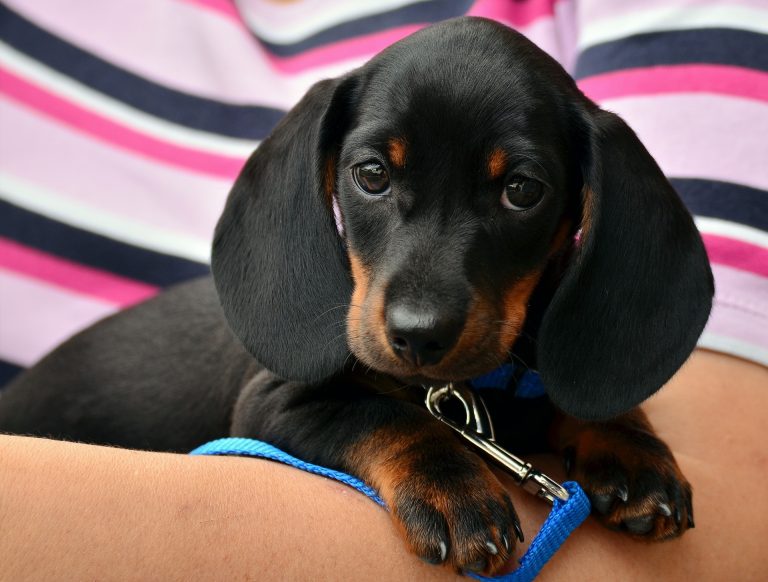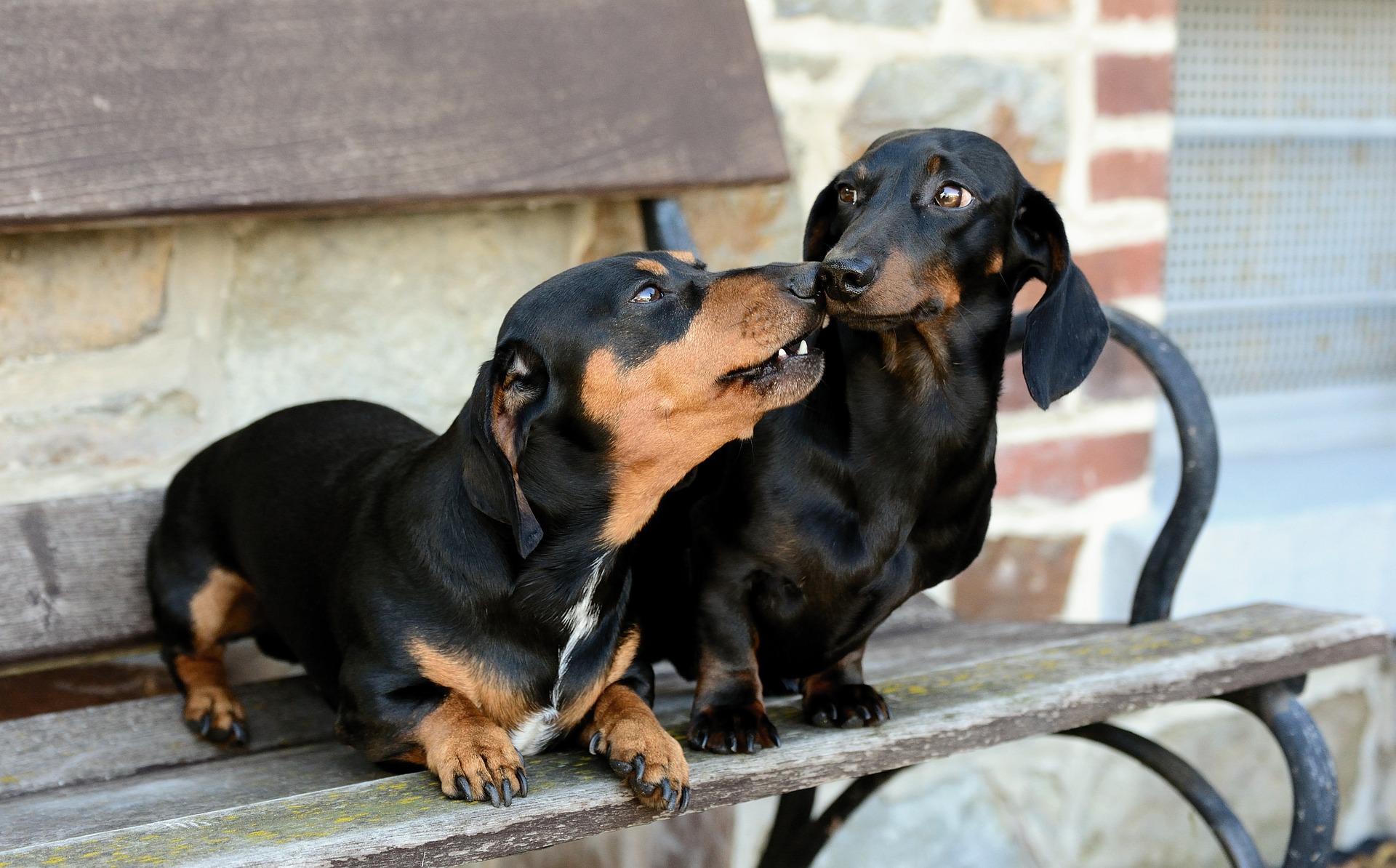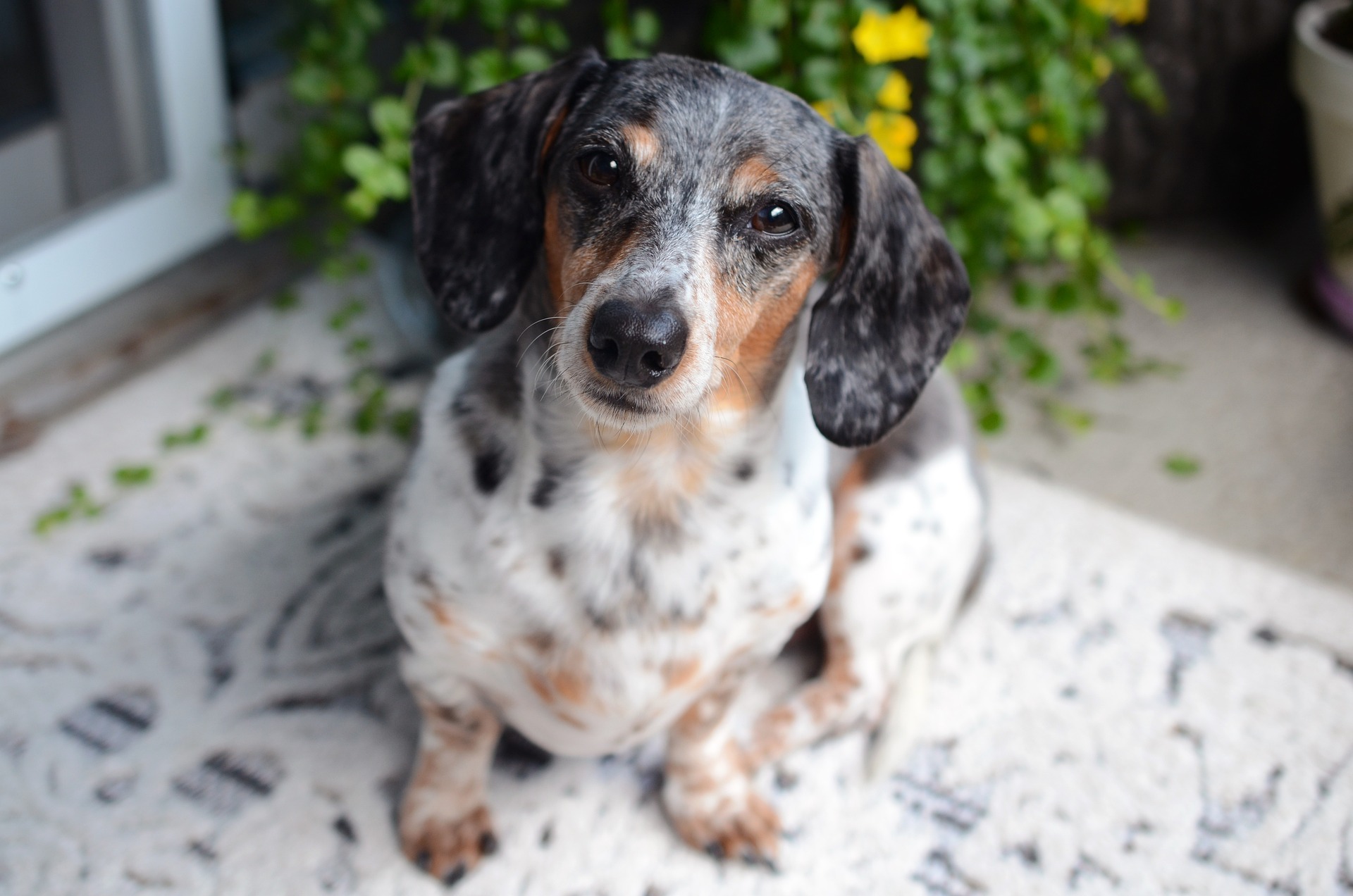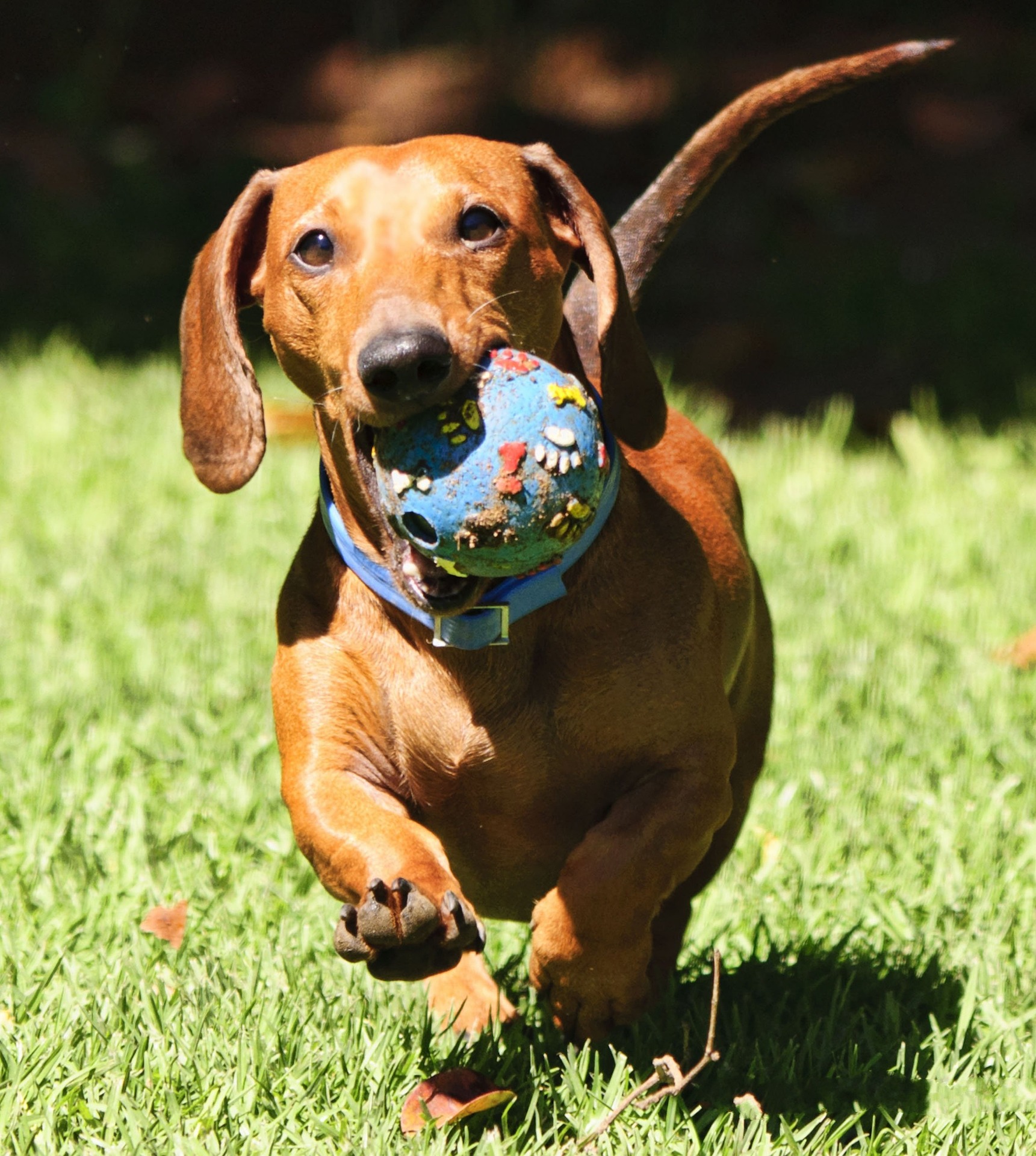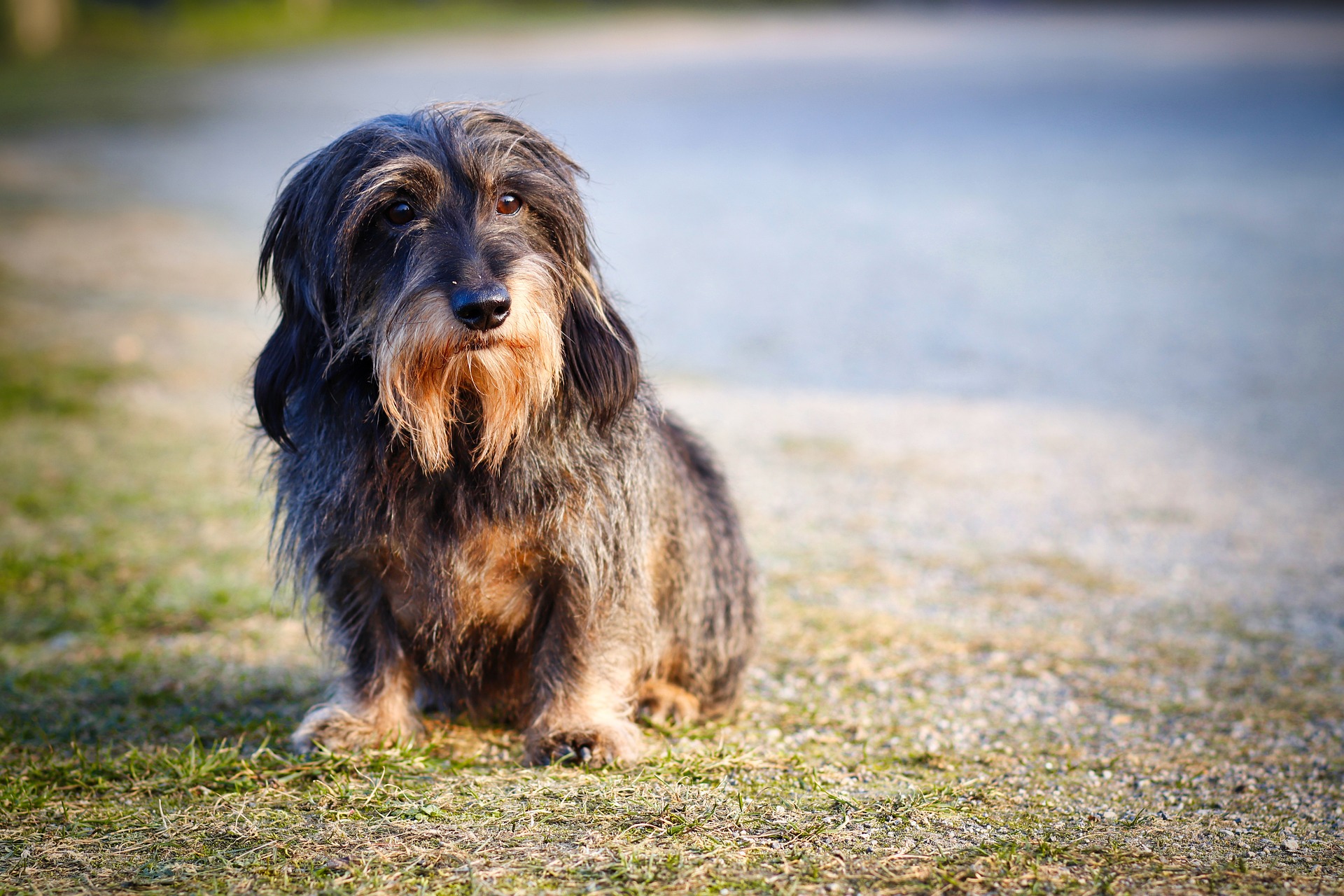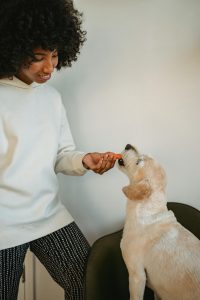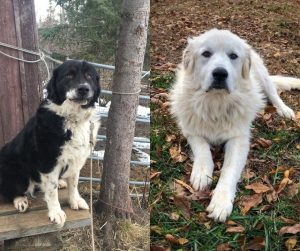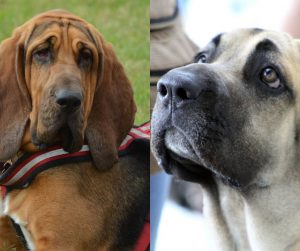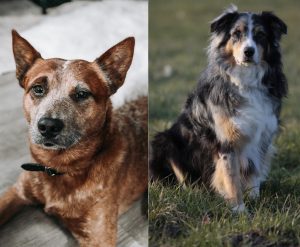Dachshunds, also affectionately known as ‘wiener dogs’ due to their distinctive long bodies and short legs, come in a surprising array of colors that many dog enthusiasts may not be aware of.
These Dachshund colors range from the classic reds and blacks to more unusual shades like isabella Dachshund and blue Dachshund. They have captured hearts around the world not just with their quirky appearance and spirited personalities, but also with their varied coat colors that can be a delightful discovery for potential owners.
The coat colors of a Dachshund, which are recognized by kennel clubs and enthusiast communities, can be categorized into standard and non-standard colors.
Standard colors tend to be more commonly known and accepted for dog shows, while non-standard and rarer colors can be quite unique, though they may not meet the breed’s show standards.
Beyond the colors themselves, Dachshunds often sport a range of patterns and markings from dappled to brindled, giving each dog a distinct look. For example, a rare type is the Brindle Piebald Dachshund.
Understanding the genetics behind these coat colors can provide insights into the breed and underscores the importance of responsible breeding practices.
Choosing a Dachshund’s color is more than an aesthetic preference, as certain coat colors and patterns may correlate with specific health issues that require special attention and care.
Key Takeaways
- Dachshunds come in a wide variety of coat colors, including standard and non-standard shades
- Patterns and markings add further diversity to the Dachshund’s appearance
- The genetics of coat colors can influence both a Dachshund’s look and its health requirements
Standard Dachshund Colors
When thinking about Dachshund colors, the American Kennel Club recognizes certain shades as the standard. These hues fit the traditional image many have of these charming little dogs, and they hold a special place in breed standards. Dachshund colors are the same no matter the size, coat type and coat length. No matter if you have a Standard Dachshund or Miniature Dachshund, a long haired Dachshund, wirehaired Dachshund or short haired Dachshund, color options are the same.
Red and Cream Variations
The red Dachshund is a classic, sporting a beautiful array of colors ranging from a deep mahogany to a lighter copper tone. It’s important to remember that while some may appear brown, the correct term is always red.
Cream Dachshunds, on the other hand, have a softer, more subdued color that’s equally gorgeous and recognized within the standard pallet. When we talk about the cream Dachshund, we also have to make another distinction. The English Cream Dachshund vs American Cream Dachshund. The English Cream Dachshund has cream colored coat, while the American Cream Dachshund has a white coat that darkens with age.
- Red Dachshund: Deep mahogany to light copper
- Cream Dachshund: Soft, muted shade, akin to off-white
Black and Tan and Chocolate
Black and tan and chocolate and tan are two more recognized shades. They both possess a distinct, sophisticated look that sets them apart.
A black and tan Dachshund features a sleek black base with tan markings usually over the eyes, on the face, and below the tail. Meanwhile, chocolate and tan Dachshunds have a rich brown base with lighter tan spots in similar areas.
- Black and Tan: Black base with distinct tan markings
- Chocolate and Tan: Rich brown base with lighter tan areas
Unique Color Patterns
While specific patterns like dapple and piebald aren’t colors themselves, they create unique appearances that are diverse yet standard. The Kennel Club acknowledges these patterns when combined with standard colors, creating a marvelous tapestry of options.
Each pattern superimposes onto the base color, giving each dog a unique twist to their appearance.
- Patterns: Include variances like dapple and piebald, which add unique touches to standard colors
Non-Standard and Rare Colors
When exploring the variety of Dachshund colors, it’s like unearthing a rainbow of possibilities. However, it’s the non-standard and rare colors that often captivate and surprise fans of the breed the most. They add a unique twist to the distinct Dachshund palette, but they also come with vital considerations for potential owners.
Blue and Isabella Tones
The blue Dachshund isn’t actually a pure blue; rather, it’s more of a diluted black, giving it a dark steel blue appearance.
The Isabella, or fawn Dachshund, shade is similarly a dilute, but of the chocolate color, leading to a light greyish-tan coat. These non-standard colors occur due to specific recessive genes, therefore making them rare and often sought after.
They can be breathtaking to behold, but it’s crucial to note that they can be linked to certain health issues, like coat and skin problems.
- Blue: A diluted black color, giving a steel blue tint
- Isabella (Fawn): A diluted chocolate color, creating a greyish-tan hue
White and Piebald Patterns
White Dachshunds are a rarity, and pure white Dachshunds are even more so. Mostly, they could sport patterns or spots of different colors, known as piebald Dachshunds.
A piebald Dachshund has a white base coat with patches of one or more colors. Piebald patterns feature prominently among non-standard colors, captivating with their splashes and speckles.
- White Dachshund: A rare coat color that is completely white
- Piebald Dachshund: White base with patches of color – non-standard, yet charmingly dappled
Albino and Non-Standard Concerns
Albinism in Dachshunds is extremely rare, characterized by a lack of pigment that results in a white coat and pinkish skin and eyes.
While striking, albino dogs may face health challenges, including vision and hearing issues, and are highly sensitive to sunlight.
For any Dachshund boasting a non-standard color, there’s a mix of allure and caution. These unique coats often turn heads, but potential owners should prioritize health over hue and seek breeders who do the same.
- Albino Dachshund: A lack of pigment leading to white fur and pink skin and eyes; comes with health challenges
- Non-Standard Color Concerns: It’s essential for future Dachshund guardians to consider long-term health over the immediate appeal of a rare coat color
Coat Patterns and Markings
When you think of Dachshund colors, you might picture their playful demeanor and unique shape, but their coats are equally remarkable! They don’t just come in solid colors; there’s a whole world of patterns and markings that give each of them a dashing flair. Let’s dive into the most notable ones.
Dapple and Double Dapple
Dapple Dachshund dogs are known for their speckled coats, a bit like they’ve been sprinkled with paint. The pattern involves lighter areas contrasting against a darker base color and it’s the result of a particular gene.
But wait, there’s Double Dapple too — it’s where they have even more white areas because both of their parents passed on the dapple gene. These pups are exceptionally eye-catching, but they must be bred responsibly to avoid health issues.
Brindle and Sable
You’ve got your Brindle Dachshund, with their tiger-stripe vibes. Imagine them with dark stripes overlaid on a lighter base color, almost like they’re stealth mode in a forest! It’s a pattern that says, “Look at me, I’m fierce!”
Then, there are the Sable Dachshund dogs, where each hair has a dark tip, giving them a two-toned appearance. It’s quite the sophisticated look, like they’re ready for a gala in their tuxedo fur.
Additional Unique Markings
Aside from those patterns, Dachshunds could show off unique markings such as a dark face mask or a charming button on the tail.
These fur quirks add to their individuality — no two Dachshunds with these markings are the same, making them as unique as fingerprints. Their patterns and markings are a kaleidoscope of genetics, leaving us in awe with each distinct design.
Genetics of Dachshund Colors
When it comes to the colorful world of Dachshunds, their striking coat colors are a tapestry woven by their genetic makeup. Understanding these genes can be like solving a puzzle, with each piece contributing to the dog’s final appearance.
Understanding Basic Genetics
The genes of a Dachshund act like a set of instructions for their coat color.
Two types of pigment – eumelanin (black or brown) and phaeomelanin (red or yellow) – determine the basic coloration.
These pigments, influenced by various genes at different loci, interact to create the Dachshund’s coat color.
Dachshunds carry a combination of dominant and recessive genes, where the dominant genes usually express themselves prominently.
- Dominant genes: Visible even if only one gene of a pair is dominant
- Recessive genes: Must be paired to be visible
The Impact of Recessive Genes
Recessive genes are like the sneakier side of genetics; they can hide throughout generations only to appear when two carriers are matched.
For example, two Dachshunds may carry the recessive gene for a unique color like blue but showcase a completely different color themselves. Only when they both pass on this hidden trait, their pups may reveal the blue coat.
List of Recessive Coat Colors in Dachshunds:
- Black and Tan Dachshund
- Black and Cream Dachshund
- Chocolate and Tan Dachshund
- Chocolate and Cream Dachshund
Color Dilution and Health
Certain genes not only affect the color but also the dog’s health.
Color dilution alopecia is a condition related to genes that dilute the coat color, predominantly seen in blue Dachshunds.
This genetic trait can lead to issues like hair thinning and flaky skin. While not all diluted dogs will develop health problems, it’s a risk to be aware of when these genes are present.
Health considerations related to color genes:
- Color dilution alopecia: Can cause skin and coat issues
- General health: Some color genes may be linked to specific health conditions
Impact of Color on Health and Care
When picking out a dachshund, it’s important to understand that their charming coat colors can go beyond appearance; some colors can be linked to specific health concerns, and unique colors might require special care.
Dealing with Health Problems
Some dachshund coat colors, particularly the rarer ones, are associated with certain genetic health problems. For instance:
- Dapple (Merle): Dogs with this pattern can face an increased risk of deafness and blindness. Make sure to stay vigilant for any signs of these issues if you own a dapple dachshund
- Double Dapple (Double Merle): This coloring, which is discouraged from breeding due to ethical concerns, carries an even higher risk of both deafness and blindness compared to single dapple dachshunds
Regular check-ups with a vet to monitor their health from an early stage are crucial. They may suggest specific tests to assess the dachshund’s hearing and eyesight capabilities.
Special Care for Unique Colors
Dachshunds with unique coat colors may require extra care considerations:
- Light-colored coats: Dogs with lighter fur, like cream or wheaten Dachshund, might have more sensitive skin. Owners should protect them with doggy sunscreen during long walks in the sunshine to prevent sunburn
- Dark and thick coats: Such coats can lead to overheating in warm weather. Owners need to ensure these dachshunds have plenty of water and shade on hot days

